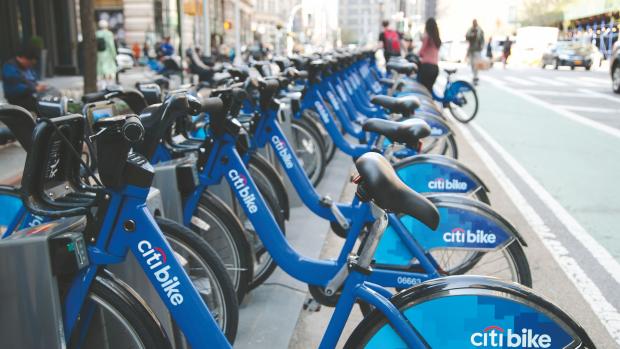Design Week 2022: Keeping the wheels turning

With more than half of the world’s population currently living in urban areas, and that figure projected to increase to 80% by 2050, NYU Tandon’s annual Design Week, run by the Design Lab @ NYU Tandon MakerSpace, took on a timely theme: how might we reimagine cities to be more equitable, inclusive, and human-centered?
The week’s events were planned with an overarching ideal in mind–that engineers, architects, urban planners, designers, and inhabitants must come together to create holistic, real-life solutions across all scales in order to develop the urban spaces of the future.
What if you’ve never owned a bike or even learned to ride one? What if you considered biking a pursuit meant only for wealthy, able-bodied hobbyists with plenty of free time?
Inbar Kishoni has been faced with those attitudes, and part of her job as the Community & Equity Program Manager on Lyft’s CitiBike team is to counter them, finding ways to increase access for New York City’s most-underserved populations and increase mobile equity. 
Kishoni was the presenter at the Design Week event “People in Motion,” held virtually on February 16, and attendees learned from her about the company’s efforts to encourage ridership across the city, including offering significantly reduced memberships to those living in NYCHA public housing or receiving Supplemental Nutrition Assistance Program (SNAP) benefits.
Kishoni, who worked in New York City’s Department of Transportation for more than a decade before joining the bike-sharing service, described other initiatives as well, including providing adaptive bicycles for people with disabilities and encouraging community groups to organize cause-based rides and learn-to-ride events. Those efforts have been successful in some part because of Citi Bike’s drive to understand their end-users and the way they experience the world.
Kishoni has ample experience in the type of public outreach that results in grassroots understanding. While at the DOT she oversaw the Street Ambassador program, sending people out into their communities to speak with neighbors to share information on upcoming initiatives and get their feedback on City projects.
“Usually, organizations will ask people to attend workshops and public meetings in order to get their opinions, but those are often held at times inconvenient for working people,” Kishoni explained. “We literally took that to the streets, framed the issues so that people could understand and weigh in, and listened to their hopes and fears for their neighborhoods.”
That experience served her well later on. Residents in Bedford-Stuyvesant, for example, were initially slow to take ownership of the idea of biking until the nonprofit Bed Stuy Restoration took the lead in reframing the conversation, moving it away from the specter of gentrification and addressing the practical ways in which biking could benefit the community and help people reach their personal goals.
People have to be engaged in order to change the status quo, Kishoni asserted. While she acknowledged the existence of status quo bias–a preference for the way things are–she argued that the status quo can be dangerous, particularly in an urban area built upon racist or exclusionary policies. (Pedestrian traffic fatalities, for example, are higher in low-income neighborhoods and BIPOC communities.)
Professor Joseph Chow, an Institute Associate Professor in the Department of Civil & Urban Engineering and Deputy Director of the C2SMART Center at NYU Tandon supports that notion and suggests, “Bikeshare and other micromobility services can help make access to public transit more viable in such transit desert neighborhoods.”
Citi Bike already constitutes one of the largest public-transportation systems in North America, recording more rides taken each day than San Francisco's Bay Area Rapid Transit (BART). If Kishoni has her way, that ridership will only continue to grow.




